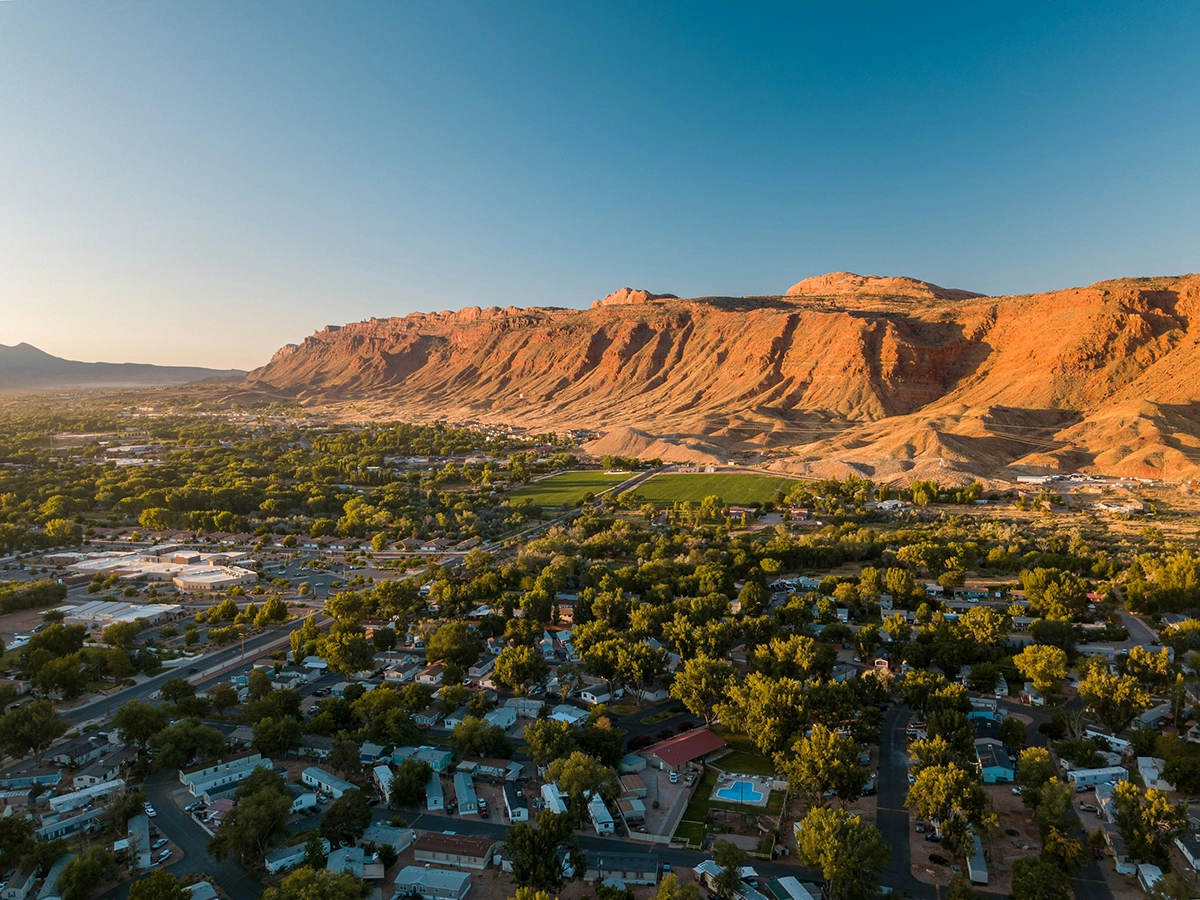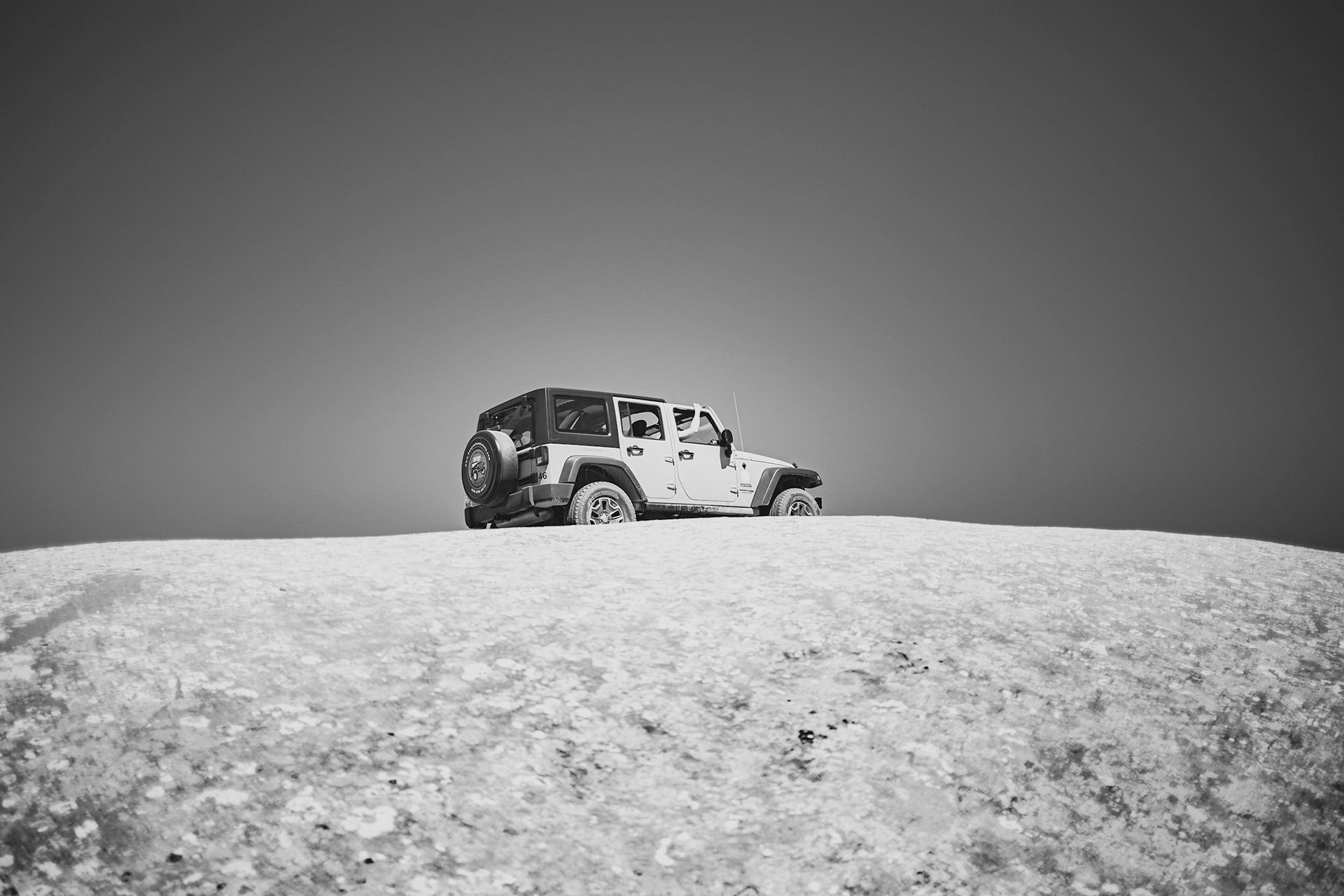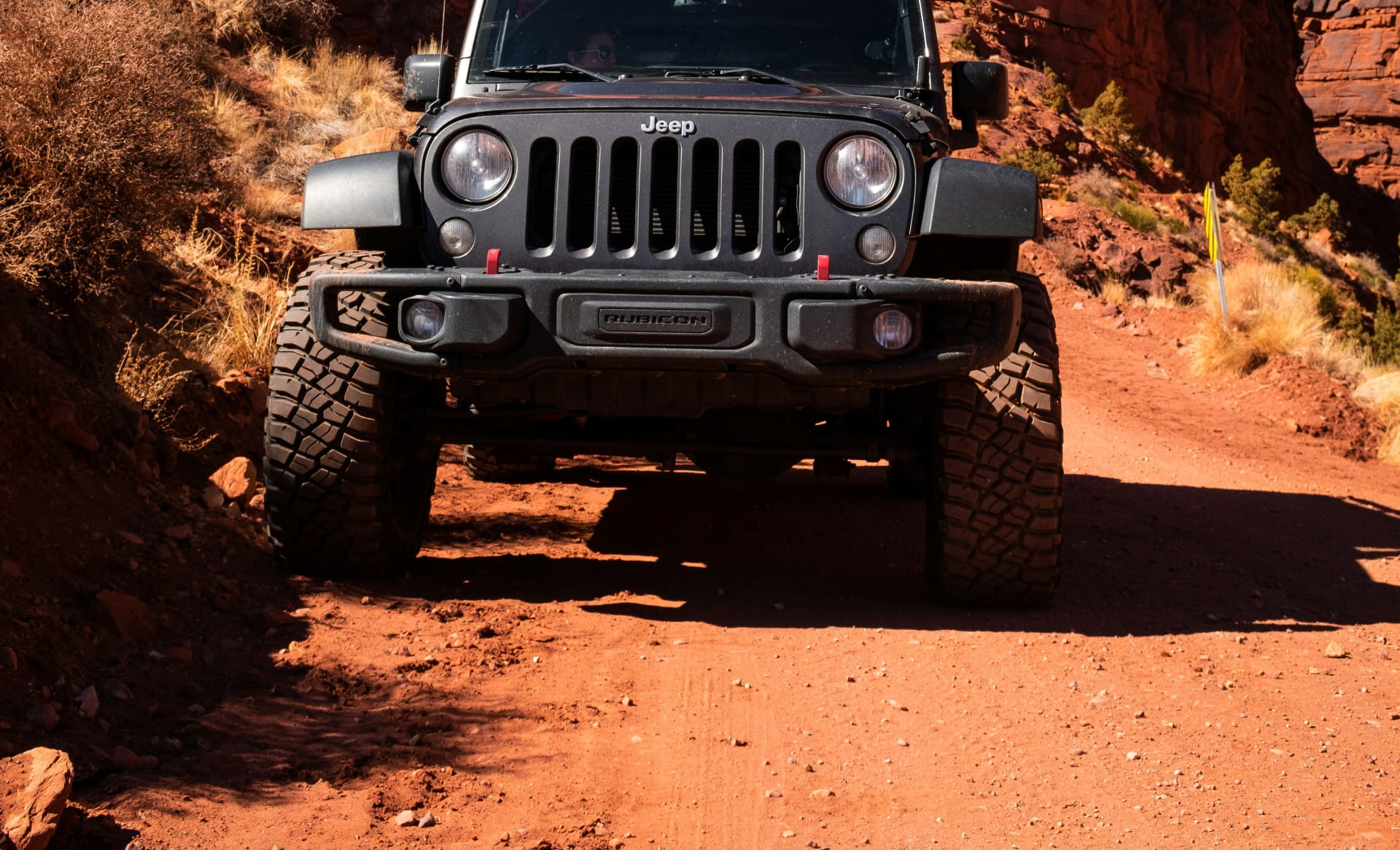Most people think they understand Moab until they actually get there. You've seen the photos—those impossible red rock formations that look like they were carved by some cosmic artist with too much time and an unlimited budget. But seeing those Instagram shots is like trying to understand the ocean by looking at a glass of water.
The truth is, Moab things to do exist because of 300 million years of very specific geological accidents that happened to align in exactly the right way.
Why This Desert Town Defies Logic
Moab sits in a geological sweet spot that shouldn't really exist. While most of Utah's landscape got buried under miles of sediment, this particular patch got lifted, twisted, and carved into something that resembles a natural theme park designed by someone who clearly never worried about safety regulations.
The Colorado River spent millions of years cutting through layers of sandstone like a patient sculptor with a water chisel. What you get is a landscape where you can climb 2,000 feet in elevation within a few miles, where slot canyons narrow to shoulder-width passages, and where rock formations balance in ways that seem to mock basic physics.
This isn't your typical desert where everything looks the same for hundreds of miles—Moab things to do pack more geological variety into 50 square miles than most states have in their entire territory.
The Forces That Built Your Playground
The Entrada Sandstone you'll be climbing on formed when this area was covered by a shallow sea. The Navajo Sandstone beneath it came from ancient sand dunes that got compressed into rock harder than concrete but more colorful than a sunset. Then came the salt deposits, which created underground layers that shifted and buckled, pushing everything above them into the arches and fins you see today.
Water did most of the heavy lifting—not through dramatic floods, but through the steady persistence of freeze-thaw cycles, chemical weathering, and the simple fact that water always finds a way downhill. The result is a landscape where every formation tells a story about pressure, time, and the relentless creativity of natural forces.
Understanding this history changes how you see every arch, every canyon, and every impossible-looking rock formation—they're not just pretty pictures, they're the visible result of processes that dwarf human timescales.
What Separates Tourists from Adventurers
Here's where most people get it wrong when it comes to things to do in Moab. They show up expecting Moab to be like a museum where you look at things from a safe distance and take photos. Real adventure seekers understand that Moab is more like a laboratory where you get to participate in ongoing experiments with gravity, endurance, and your own comfort zone.
Casual tourists drive the scenic routes, take selfies at Delicate Arch, and wonder why people make such a big deal about this place. Adventure seekers recognize that the real Moab exists in the spaces between the famous landmarks—in slot canyons that require problem-solving skills, on bike trails that test your relationship with fear, and in backcountry areas where your decision-making ability becomes more important than your Instagram followers.
The difference isn't about extreme sports or death-defying stunts—it's about being willing to engage with a landscape that demands you pay attention, think ahead, and respect forces much larger than yourself.
The Arches National Park Experience
Arches National Park contains over 2,000 natural stone arches, which means you could visit a different one every day for more than five years. Most people see about four of them, take the same photos everyone else takes, and call it a day. The park operates on two levels: the surface experience that satisfies most visitors, and the deeper reality that reveals itself to people willing to look beyond the obvious.
Delicate Arch gets 1.5 million visitors per year, but most people spend less than 30 minutes there
Fiery Furnace requires a guided tour or permit because people literally get lost in a maze smaller than a city block
The Windows Section contains the most accessible arches, making it perfect for understanding how these formations actually work
Delicate Arch: Beyond the Surface-Level Experience
The 1.5-mile hike to Delicate Arch isn't difficult, but most people miss the entire story unfolding beneath their feet. The trail crosses a landscape that shows you exactly how arches form—smooth slickrock shaped by water, smaller arches in development, and fracture patterns that predict where the next arch will appear.
The arch itself stands 65 feet tall and spans 45 feet, but what matters is that you're looking at a structure that's simultaneously incredibly fragile and surprisingly durable.
Delicate Arch teaches you to see geological time in action, but only if you pay attention to the journey instead of just the destination.
Fiery Furnace: Navigation as Problem-Solving
Fiery Furnace looks like a simple maze but functions as a three-dimensional puzzle. GPS becomes useless when surrounded by 100-foot walls, and the ranger-guided tours teach you to read the rock—identifying handholds, spotting stable surfaces, and recognizing visual cues that separate passable routes from dead ends.
Fiery Furnace transforms hiking from a physical activity into a mental exercise that teaches you how landscapes can be both predictable and surprising.
Windows Section: Geology Made Accessible
North and South Windows sit side by side, allowing you to compare different stages of arch development in real time. The short, easy trails let you focus on observation rather than endurance while examining the rock layers that tell the story of ancient environments.
Windows Section proves that accessibility and education can coexist—you don't need to suffer to learn something meaningful about how natural systems work.

Canyonlands National Park: Three Districts, Endless Possibilities
Canyonlands covers 527 square miles but divides into three separate districts that require different skills and reward different types of curiosity. The Colorado and Green Rivers carved this landscape into isolated sections—getting from Island in the Sky to The Needles requires a 100-mile drive around terrain you can see across a few miles of airspace.
Island in the Sky offers dramatic viewpoints with minimal physical commitment
The Needles rewards backcountry skills with formations you can't see from any road
The Maze requires serious outdoor experience—people have died here from poor planning
Dead Horse Point provides the most famous view without park entry requirements
Island in the Sky functions like a geological observation deck suspended 1,000 feet above the surrounding landscape. Mesa Arch frames distant mountains through natural stone, while Grand View Point reveals 100 miles of layered canyons. The White Rim Road drops 1,300 feet below for mountain bikers and 4WD vehicles willing to handle loose rock and serious exposure.
The Needles gets its name from colorful sandstone spires that create a landscape resembling a stone forest. Unlike Island in the Sky's broad perspectives, this district rewards close examination through backcountry trails that connect ancient rancher roads with routes accessing petroglyphs and slot canyons requiring scrambling skills.
The Maze earned its name honestly—this remote district challenges experienced outdoors people with routes requiring self-rescue capability and planning for emergencies days from help. Accessing it requires high-clearance 4WD and knowledge to handle breakdowns 50+ miles from services, but rewards visitors with untouched canyon country.
Dead Horse Point State Park provides the classic Canyonlands overlook without park fees or permits. The viewpoint sits 2,000 feet above the Colorado River, offering the perspective in most Canyonlands photography through a short walk that's accessible to anyone.
Mountain Biking: Where Legends Are Born
Moab created modern mountain biking by accident. The slickrock formations that seem impossible to ride on actually provide incredible traction, turning what looks like a slip-and-slide surface into grippy terrain that rewards momentum and confidence. What started as a few local riders exploring jeep trails in the 1980s evolved into the world's most famous mountain biking destination.
The sandstone here offers something unique—a riding surface that's simultaneously predictable and challenging, technical enough to test skills but forgiving enough that crashes usually result in scrapes rather than serious injuries. The elevation changes, exposure, and route-finding requirements separate casual riders from people genuinely committed to improving their skills.
Slickrock Trail sees 100,000+ riders annually but still challenges experienced bikers
Porcupine Rim combines technical difficulty with views that justify the suffering
Klondike Bluffs offers advanced trails without the crowds of famous routes
Amasa Back provides the perfect step up from beginner to intermediate riding
Local bike shops understand Moab conditions better than any online review
Slickrock Bike Trail: The Foundation
The 10.5-mile Slickrock Trail established Moab's reputation by proving that mountain bikes could handle terrain previously reserved for motorcycles. The route follows painted white dots across rolling sandstone that resembles frozen ocean waves, requiring riders to maintain momentum through technical climbs and descents that punish hesitation.
What makes Slickrock legendary isn't the distance or elevation gain—other trails offer more of both. The challenge comes from riding surfaces that demand complete trust in physics and bike handling skills. You'll encounter sections where the correct line seems impossible until you commit to it, and areas where momentum becomes more important than strength.
Pro Tip: Slickrock rewards riders who understand that looking ahead beats staring at your front wheel—the trail flows better when you trust the rock's natural traction rather than fighting it.
Porcupine Rim: Technical Payoff
Porcupine Rim combines the technical challenges that make Moab things to do lists with views that remind you why people travel across the country to ride here. The 15-mile route starts with a challenging climb through loose rock and technical sections before rewarding riders with singletrack that flows along cliff edges high above the Colorado River.
The descent requires skills that most riders don't possess when they arrive in Moab—exposed sections where mistakes have consequences, rock gardens that demand precise line choices, and sustained technical features that test endurance as much as handling ability. This isn't a trail for improving your skills; it's for demonstrating skills you've already developed.
Pro Tip: Porcupine Rim punishes riders who attempt it too early in their Moab experience—spend time on easier trails first to understand how slickrock behaves before committing to routes with serious exposure.
Klondike Bluffs: Advanced Without Crowds
Klondike Bluffs contains some of Moab's most challenging trails without appearing on every Moab things to do recommendation list. The area offers technical singletrack through tower formations and fins that require route-finding skills and comfort with exposure that casual riders find intimidating.
Dino Flow and Jurassic trails provide sustained technical riding through landscapes that feel more remote than their distance from town suggests. These routes reward riders seeking challenges beyond the famous trails, with features that demand creativity and problem-solving skills rather than just physical fitness.
Amasa Back: Intermediate Evolution
Amasa Back provides the perfect progression from beginner trails to advanced riding, with optional technical features that let riders choose their challenge level. The route climbs steadily through increasingly difficult terrain before reaching viewpoints that overlook the Colorado River and surrounding canyon country.
The trail includes multiple route options—easier lines around technical features and advanced lines that test skills without requiring expert-level commitment. This flexibility makes Amasa Back ideal for mixed-ability groups and riders working to expand their comfort zones.
Pro Tip: Local bike shops like Poison Spider Bicycles and Rim Cyclery understand Moab's specific demands—their rental recommendations and route advice prove more valuable than generic online reviews from riders who visited once.
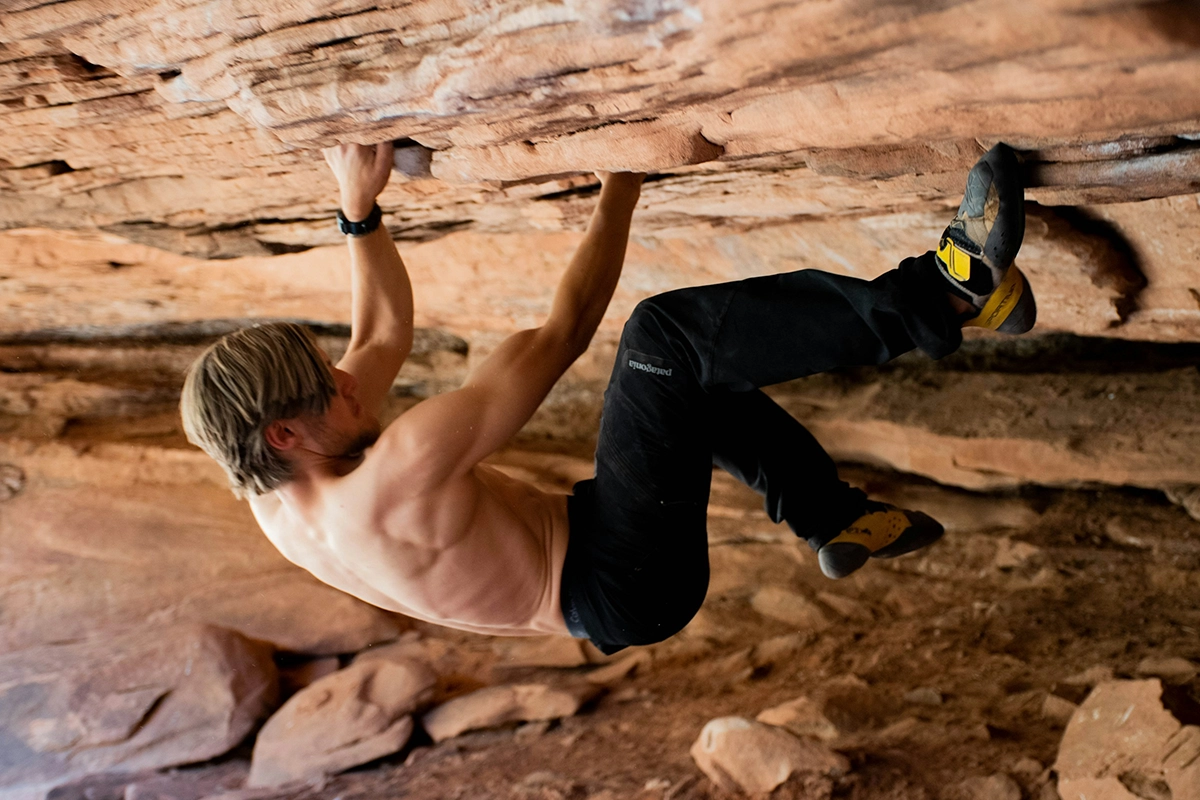
Rock Climbing and Canyoneering
Moab's climbing scene operates on different rules than most destinations. The Entrada and Wingate sandstones that create the area's iconic formations also present unique challenges—rock that can be simultaneously solid and crumbly, routes that require desert-specific techniques, and environmental factors that affect safety in ways most climbers don't expect.
The combination of accessible sport routes and serious multi-pitch adventures means Moab attracts everyone from gym climbers on vacation to expedition-level alpinists seeking technical challenges. Understanding which category you fit into becomes important when the nearest hospital sits 30 miles away and helicopter rescues cost more than most people's annual salary.
Fisher Towers offers multi-pitch climbing on rock that defies normal sandstone expectations
Wall Street provides sport climbing in a slot canyon that stays cool during summer heat
Canyoneering requires rope skills that most hikers don't possess but can learn quickly
Professional guides know which routes match your actual skill level, not your aspirational one
Fisher Towers: Commitment in Crumbling Rock
Fisher Towers rises 900 feet above the Colorado River in formations that look like medieval castles designed by someone with serious geological issues. The Cutler Formation sandstone here behaves differently than climbing rock elsewhere—what appears solid can break off in your hands, while sections that look sketchy often prove surprisingly reliable.
The Ancient Art spire requires technical aid climbing skills and comfort with exposure that extends far beyond the physical difficulty. Routes here demand patience, creativity, and acceptance that retreat might become necessary due to weather, rockfall, or equipment problems that wouldn't matter on more predictable rock.
Wall Street: Technical Sport Routes
Wall Street cuts a narrow slot through sandstone walls that create natural air conditioning during Moab's brutal summer months. The corridor contains over 30 sport routes ranging from moderate to seriously difficult, with protection that meets modern safety standards on rock that provides excellent friction.
The confined space means route-finding becomes part of the challenge—understanding how chimneys, off-widths, and stemming techniques work in narrow passages where normal climbing movements don't apply. These aren't routes you figure out on sight; they require reading the rock and adapting techniques to unusual body positions.
Canyoneering: Technical Descents
Moab's slot canyons offer some of the most accessible canyoneering in the Southwest, with routes that teach fundamental rappelling and anchor-building skills without requiring expedition-level planning. Granary Canyon and Epinephrine provide good introductions to the sport, while more advanced routes like Spry and Entrajo demand technical skills and emergency preparedness.
Canyoneering here involves more than just rappelling—route-finding through complex canyon systems, understanding flash flood potential, and managing gear in confined spaces where dropping something means losing it permanently. The learning curve proves steep but manageable for people with basic outdoor skills.
Guided vs. Self-Guided: Professional Knowledge
PRO TIPS for Choosing Professional Guidance:
Hire guides when attempting multi-pitch routes you've never climbed before—local knowledge about gear requirements, escape routes, and weather patterns proves invaluable on formations like Fisher Towers where mistakes cascade quickly.
Self-guided climbing works well for sport routes within your proven ability level, but consider that Moab things to do lists often underestimate the technical and logistical challenges of desert climbing compared to mountain or gym environments.
Professional canyoneering guides teach rope skills and rescue techniques that take years to develop independently, while also handling permits, logistics, and safety management that lets you focus on learning rather than planning.
PRO TIPS for Self-Guided Success:
Start with routes well below your normal climbing grade to understand how Moab sandstone behaves differently than rock you're familiar with—what feels secure at home might prove unreliable here.
Carry more water than seems necessary and plan for temperature swings that can range 40+ degrees between canyon bottoms and exposed cliff faces during the same day.
Research beta thoroughly but expect conditions to differ from online route descriptions—rockfall, anchor degradation, and access changes happen frequently in this environment.
River Adventures on the Colorado
The Colorado River carved every canyon, arch, and formation you see around Moab, which means experiencing the water gives you a different perspective on how this landscape actually works. The river runs year-round but changes personality dramatically based on snowpack, dam releases, and seasonal weather patterns that affect everything from rapid difficulty to wildlife viewing opportunities.
Most Moab things to do focus on the rock formations above the waterline, but the river reveals geological layers, wildlife habitats, and access to areas impossible to reach by any other method. Understanding water levels and seasonal timing becomes more important than physical fitness for choosing the right river experience.
Whitewater rafting ranges from gentle Class II to technical Class IV depending on section and season
Calm water floats provide access to petroglyphs and geology without rapids experience
Stand-up paddleboarding works on protected sections during stable water conditions
Water levels fluctuate daily based on dam releases that can change conditions dramatically
Whitewater Rafting: Rapids Through Red Rock
Colorado River rafting near Moab offers Class II-IV rapids through canyon scenery that shifts from wide valleys to narrow gorges within single-day trips. The most popular section runs from Fisher Towers to Take-Out Beach, combining technical rapids with calm stretches that allow time for examining rock layers and spotting wildlife.
Spring runoff creates higher water and more aggressive rapids, while late summer reveals more rocks and requires precise navigation through shallow sections. Professional outfitters handle equipment and safety management, allowing participants to focus on reading water and enjoying perspectives impossible to achieve from land.
Calm Water Floats and Stand-Up Paddleboarding
Sections above and below the main rapids offer family-friendly floating with petroglyphs, side canyons, and geological features accessible without whitewater skills. These trips emphasize education over adrenaline, with opportunities to examine how water shapes sandstone and creates the formations visible throughout the area.
Stand-up paddleboarding works well on protected stretches during stable water conditions, though daily dam releases can create currents that challenge inexperienced paddlers. The sport provides intimate access to rock walls and alcoves too shallow for rafts.
Seasonal Water Management
DO: Check daily water release schedules from Glen Canyon Dam before planning any river activity—flows can double or triple within hours based on power generation demands.
DO: Book whitewater trips during spring runoff (May-June) for maximum excitement, or late summer (August-September) for more technical navigation through exposed rock gardens.
DO: Bring sun protection and extra water regardless of season—river canyons amplify heat and UV exposure while providing limited shade during midday hours.
DON'Ts: Attempt self-guided trips without understanding permit requirements, safety protocols, and take-out logistics that differ significantly from recreational floating elsewhere.
Underestimate how quickly weather changes affect river conditions—afternoon thunderstorms can create flash floods in side canyons within minutes.
Off-Road Vehicle Exploration
Moab's slickrock terrain was discovered by off-road enthusiasts decades before mountain bikers arrived, creating a network of trails that test vehicle capabilities in ways that flat desert or forest roads simply can't match. The Entrada Sandstone formations provide natural obstacles that require technical driving skills, proper equipment, and understanding of how vehicles behave on surfaces that offer traction in unexpected places.
The difference between recreational off-roading and serious rock crawling becomes apparent quickly here. Routes that look manageable from a distance often include sections where wheelbase, ground clearance, and driver experience determine success or failure. Understanding your vehicle's limitations matters more than horsepower or aggressive tires.
Hell's Revenge follows slickrock domes that challenge even experienced 4WD drivers
Poison Spider Mesa requires technical rock crawling skills and appropriate vehicle modifications
Corona Arch Trail offers ATV access to formations typically reached only by hiking
UTV rentals provide capable vehicles without the logistics of transporting your own
Hell's Revenge: Slickrock Vehicle Challenge
Hell's Revenge covers 6.5 miles of slickrock terrain that tests 4WD capabilities through steep climbs, off-camber sections, and exposed ledges where mistakes result in expensive bodywork or worse. The trail follows natural sandstone formations that create obstacles requiring momentum, precise wheel placement, and comfort with situations where three wheels might leave the ground simultaneously.
The route includes several optional challenging sections that allow drivers to choose their risk level, but even the main trail demands skills that weekend warriors often overestimate. Spotters become necessary for sections where drivers can't see their wheel placement, and understanding how to read slickrock surfaces prevents many of the incidents that require expensive recoveries.
Poison Spider Mesa: Technical Rock Crawling
Poison Spider Mesa represents serious rock crawling that separates modified vehicles from stock 4WDs. The trail climbs through increasingly technical obstacles that require lockers, armor, and driving techniques that most people don't possess. This isn't recreational off-roading—it's problem-solving with vehicles in situations where poor decisions create expensive consequences.
The mesa top rewards technical driving with expansive views of the Colorado River and surrounding canyon country, but reaching it requires navigating obstacles with names like "The Waterfall" and "Hell's Gate" that accurately describe their difficulty levels.
Corona Arch Trail: ATV Access to Natural Wonders
Corona Arch Trail provides ATV and UTV access to one of Moab's most impressive formations without the 3-mile hike required for foot traffic. The route follows a mix of slickrock and sandy washes that demonstrate how different vehicles handle varying terrain types, making it ideal for riders wanting to combine off-road skills development with destination goals.
The 140-foot-tall arch justifies the technical challenges of reaching it, while the route itself teaches fundamental off-road skills like reading terrain, managing momentum, and understanding how different surfaces affect vehicle behavior. This trail appears on most comprehensive Moab things to do lists for good reason—it combines accessibility with genuine adventure.
UTV Rentals vs. Personal Vehicles
Bringing your own vehicle makes sense for people with proper modifications, insurance coverage, and experience handling repairs in remote locations. However, most recreational 4WDs lack the ground clearance, armor, and drivetrain modifications that Moab's technical trails demand, making rental UTVs the practical choice for serious off-road exploration.
Modern UTVs provide capabilities that exceed most personal vehicles while eliminating concerns about damage, breakdown recovery, and transportation logistics. Rental companies understand local trail conditions and can match vehicle specifications to planned routes better than most visitors can assess independently.
Cliffhanger Rentals: Your Off-Road Solution
Cliffhanger Rentals specializes in UTVs and Jeeps specifically equipped for Moab's demanding terrain, with vehicles maintained by people who understand what serious off-road exploration requires. Their fleet includes everything from beginner-friendly machines to technical rock crawlers capable of handling routes that appear on expert-level Moab things to do recommendations.
Ready to experience Moab's legendary off-road trails? Contact Cliffhanger Jeep Rentals today and get behind the wheel of a vehicle that can handle whatever adventure you're seeking.
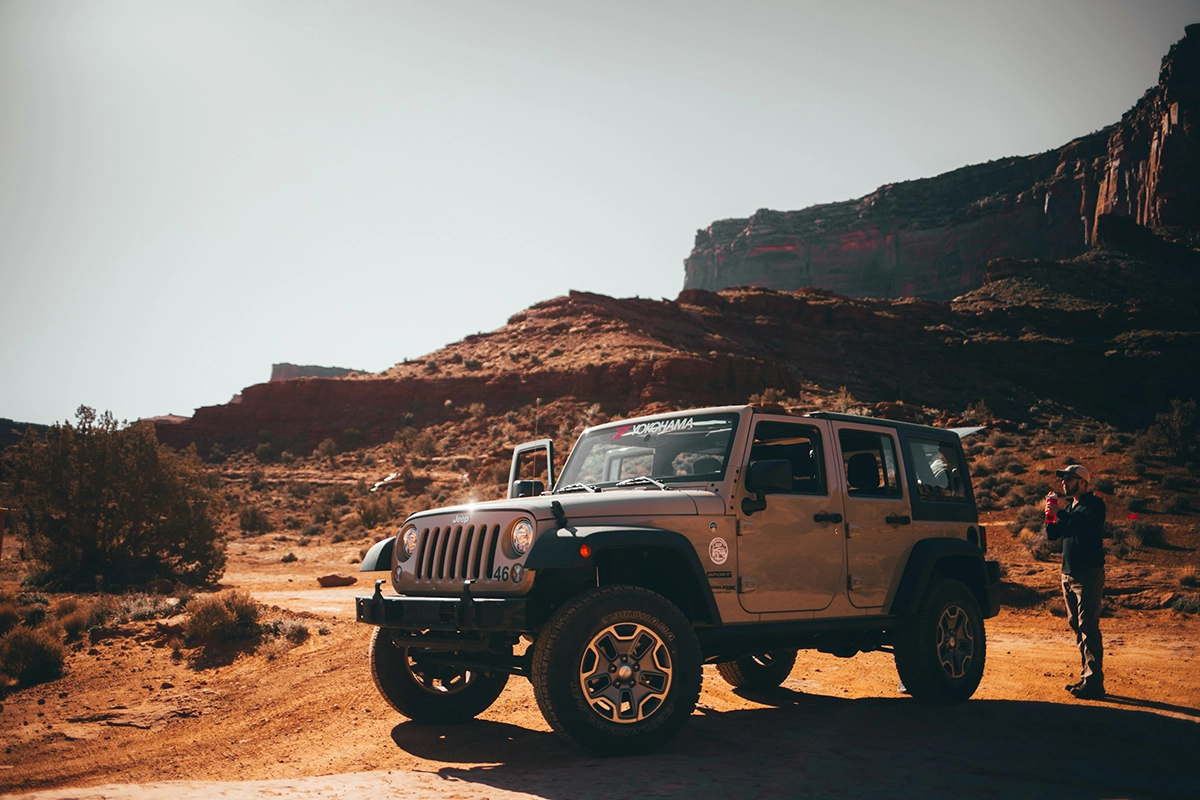
Base Camp Moab: Where to Stay and Eat
Your base camp choice in Moab affects more than just comfort—it determines how early you can start adventures, how much energy you have for multiple activity days, and whether you spend vacation time dealing with logistics or actually experiencing the landscape. The town operates on adventure schedules, meaning restaurants, gear shops, and even gas stations adapt their hours to accommodate people who start hiking at sunrise and return after sunset.
Location matters more than amenities when you're planning to spend most of your time outside. Being close to trailheads saves hours of driving, while access to gear shops and food resupply can make the difference between successful trips and frustrating equipment failures in remote locations.
Developed campgrounds provide reliability but fill up months in advance during peak seasons
Dispersed camping offers solitude and flexibility but requires self-sufficiency and Leave No Trace knowledge
Hotels range from basic chains to luxury properties with red rock views that justify the premium pricing
Local restaurants understand that adventure seekers need substantial meals, not just tourist-friendly portions
Camping: Developed vs. Dispersed Options
Developed campgrounds like Devils Garden in Arches and Squaw Flat in Canyonlands provide reliable water, restrooms, and fire rings but require reservations that often book out 5-6 months ahead. These sites offer convenience and proximity to major attractions but limit flexibility for spontaneous trip extensions or itinerary changes.
Dispersed camping on Bureau of Land Management land around Moab provides unlimited flexibility and solitude for people comfortable with primitive conditions. Popular areas like Sand Flats Recreation Area and Klondike Bluffs offer established sites with fire rings and pit toilets, while more remote locations require complete self-sufficiency and careful attention to Leave No Trace principles.
Dispersed camping rewards preparation and self-reliance but punishes people who underestimate desert conditions or overestimate their outdoor skills.
Hotels and Lodges: Comfort Levels
Budget hotels in Moab provide basic accommodations that focus on clean rooms and reliable WiFi rather than luxury amenities. These properties understand that most guests spend minimal time indoors and prioritize location and value over elaborate facilities.
Luxury lodges like Sorrel River Ranch and Under Canvas Moab offer premium experiences with red rock views, spa services, and gourmet dining that can justify the expense for people wanting to combine adventure with comfort. These properties cater to guests who view accommodations as part of the overall experience rather than just a place to sleep.
High-end accommodations in Moab provide genuine luxury but expect to pay resort prices for desert locations that may not offer the same amenities as traditional vacation destinations.
Local Food Scene: Fuel for Adventures
Moab's restaurant scene understands that people burning 3,000+ calories per day need substantial meals, not delicate portions designed for sedentary tourists. Local favorites like Pasta Jay's and Quesadilla Mobilla provide the caloric density and nutritional balance that support multi-day adventure schedules.
The town's food trucks and casual dining options excel at portable meals perfect for trail lunches, while coffee shops open early enough to fuel sunrise photography sessions and pre-dawn hiking starts. Understanding that timing matters as much as quality, many establishments modify their hours seasonally to accommodate adventure schedules.
Moab restaurants that survive long-term understand their customers' actual needs—substantial portions, early hours, and grab-and-go options that work with outdoor schedules.
Gear Shops: Local Knowledge and Last-Minute Supplies
Local gear shops like Gear Heads provide more than equipment sales—they offer real-time trail conditions, weather updates, and honest assessments of whether your planned routes match your actual skill levels. Staff members who live and play in Moab year-round understand seasonal changes, hidden obstacles, and alternative options when popular trails become crowded or dangerous.
These shops stock items specific to desert conditions that general outdoor retailers often miss—specialized sun protection, hydration systems designed for extended heat exposure, and repair supplies for equipment damage that rocky terrain causes. The local knowledge often proves more valuable than the gear itself.
Moab gear shops function as informal information centers where experienced locals share insights that guidebooks and websites can't provide about current conditions and realistic difficulty assessments.
Planning Your Moab Adventure
Moab planning requires different thinking than most vacation destinations because the landscape imposes physical and logistical constraints that don't exist in typical tourist areas. Your fitness level, experience with desert conditions, and tolerance for discomfort determine which activities make sense, while seasonal timing affects everything from trail accessibility to accommodation pricing. Most people underestimate both the physical demands and the time required to properly experience what makes this place unique.
Trip Length: Matching Time to Ambitions
A 3-day weekend gives you enough time to sample Moab's variety without the depth that creates lasting memories. You can hit the major viewpoints in Arches, complete one or two moderate trails, and experience either mountain biking or river activities—but not all of them well. This timeframe works for people checking Moab things to do off their bucket list but doesn't allow for the deeper exploration that reveals why serious adventurers return repeatedly.
Week-long expeditions let you progress from easier activities to more challenging ones as you adapt to desert conditions and develop local knowledge. You can combine multiple districts of Canyonlands, tackle technical mountain bike trails after building skills on easier routes, and have flexibility for weather delays or rest days when your body demands recovery time.
3-day trips require choosing between breadth and depth—you can sample everything or experience something meaningful
5-7 days allows progression from tourist activities to genuine adventure as your skills and confidence develop
10+ day expeditions support backcountry exploration and advanced activities that require acclimatization periods
Physical Preparation: Desert-Specific Conditioning
Desert hiking and biking demand cardiovascular fitness combined with heat tolerance that most people don't possess until they've spent time in these conditions. The combination of elevation, sun exposure, and terrain that constantly challenges balance and coordination creates fatigue patterns different from gym workouts or familiar outdoor activities.
Essential Gear Checklist:
Bring from home:
Sun protection: wide-brimmed hat, UV-rated clothing, reef-safe sunscreen
Hydration: more water bottles/bladders than you think you need
Navigation: offline maps, backup GPS, physical maps for areas with poor cell coverage
Safety: first aid supplies, emergency whistle, headlamp with extra batteries
Rent locally:
Specialized bikes designed for slickrock and technical terrain
Climbing gear specific to sandstone protection and desert rescue situations
Camping equipment adapted to desert temperature swings and wind exposure
Buy locally:
Fresh food for multi-day trips
Replacement items for gear damaged by abrasive rock and extreme conditions
Local maps with current trail conditions and seasonal access information
Budget Considerations: Reality Check
Moab expenses add up quickly because quality equipment, guided services, and desert-appropriate gear cost more than casual outdoor activities. Budget-conscious travelers can minimize costs through camping, self-guided activities, and careful timing, but attempting to do serious Moab things to do on a shoestring budget often results in safety compromises or disappointing experiences.
Mid-range budgets ($150-250/day for two people) support a mix of guided and self-guided activities with decent accommodations and equipment rentals. This level allows for professional instruction on technical skills while maintaining flexibility for spontaneous exploration. High-end budgets ($300+/day) provide access to luxury lodging, premium guided services, and specialized equipment that enhances safety and comfort during challenging activities.
Remember: Moab rewards preparation and punishes cutting corners—investing in proper gear, realistic trip planning, and honest assessment of your abilities creates experiences that justify the costs and effort required to reach this remarkable landscape.
Conclusion: Your Red Rock Reality
Moab doesn't just offer outdoor activities—it recalibrates your understanding of what adventure actually means. Most destinations provide experiences you can describe to friends using familiar comparisons, but Moab creates reference points that didn't exist before you arrived. The landscape operates on scales of time and force that make human concerns feel appropriately small while simultaneously making your individual choices feel more significant than usual.
Why Moab Changes Your Adventure Perspective
After spending time in terrain shaped by 300 million years of geological processes, other outdoor destinations start feeling predictable. The combination of accessible challenges and genuine consequences that characterizes Moab activities creates a standard that few places can match. You develop appreciation for landscapes that demand attention, respect, and skills rather than just showing up with enthusiasm and good intentions.
Visiting vs. Experiencing: The Critical Difference
Tourists visit Moab to photograph formations and check items off Moab things to do lists before returning to familiar routines. People who truly experience this place allow it to change how they approach challenges, assess risks, and appreciate the intersection of natural forces with human capabilities. The difference shows up in how you prepare for future adventures, what activities you seek out, and how you evaluate whether experiences justify the effort required to access them.
The distinction isn't about extreme sports or technical difficulty—it's about developing relationships with landscapes that continue teaching you something new each time you return. Moab rewards people who approach it as students rather than conquerors, offering lessons about patience, preparation, and humility that apply far beyond outdoor recreation.
Moab teaches you that genuine adventure requires engaging with forces larger than yourself while accepting personal responsibility for the outcomes—a lesson that transforms how you approach challenges both in nature and in regular life.
